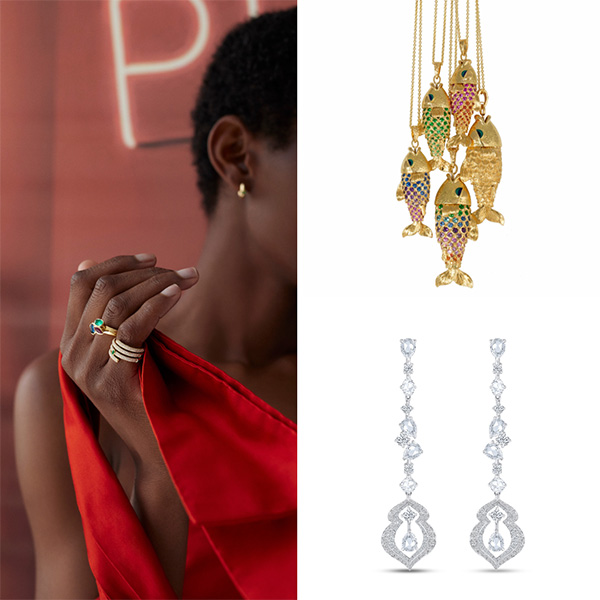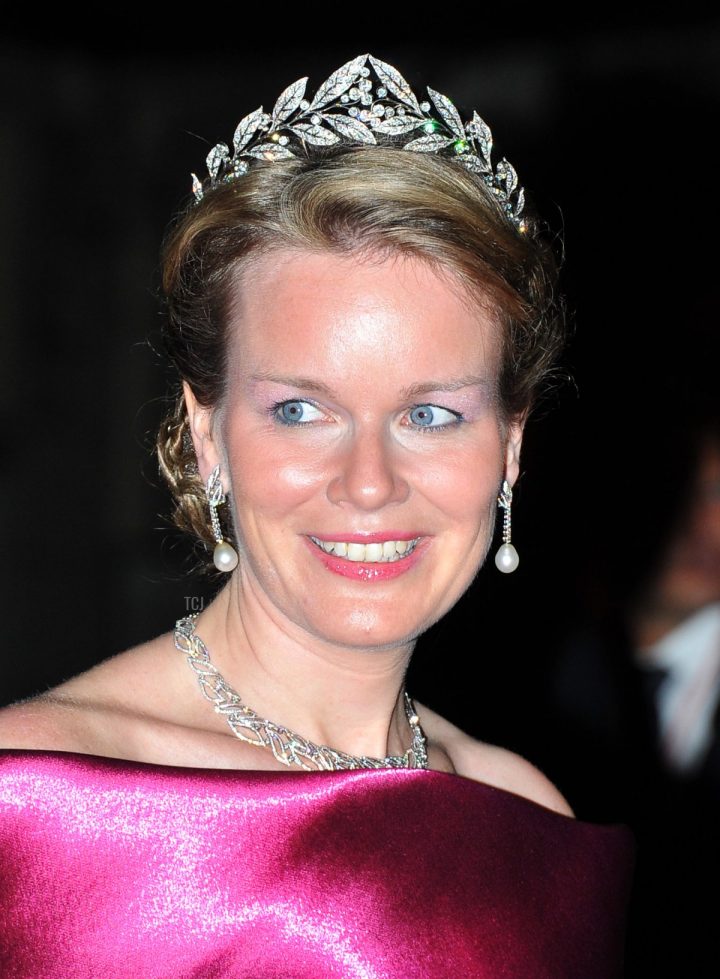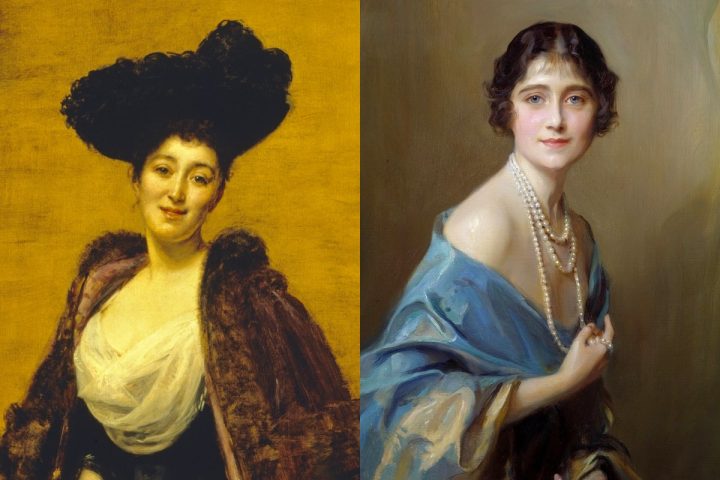Where is all the fresh talent hiding out? I’ll tell you this: On Tuesday and Wednesday about 30 jewelry designers that fit this description were all gathered under one roof at the Palais Vivienne in the heart of Paris. They were participating in a special trade show event known as the Precious Room by Muriel Piaser that takes place twice a year to coincide with Paris Haute Couture Week.
There is an international flavor to the collective of emerging names, as well as established designers who are not as well known in the United States and a few high jewelers as well (hello, Harakh).
Many Precious Room participants hail from, and manufacture their product, in France, such as Sophie d’Agon, Vever, and Isabelle Langlois—this alone makes me wish I were there to see and discover. I know that retail buyers are perpetually hunting for the next fresh voice, and this event might be one to make time for (there will be another edition in January 2023). And designers seeking a venue and peers that match their ultrachic, singular, and creative visions might want to look into adding Precious Room to their trade show schedule.
Precious Room by Muriel Piaser launched in 2019, and it functions as a trade show and design collective in one. But it’s super, super intimate and selective—Piaser told me she curates the presenting designers through “a lot of scouting, personal tastes, and trend watching” and that she is “focused on the mix and match of established and famous brands and young designers.”
At the end of the first day of this most recent edition, Piaser reached out to me via WhatsApp to let me know that the event had “a very good energy” and reported attendance from top buyers from Printemps, Galeries Lafayette, and Bloomingdale’s, as well as the buying offices of international showrooms such as Mint in New York and HP France in Tokyo. Influencers including @laurainghirami were also in attendance.
A great turnout, to be sure. Which may be why designer Alexandra Abramczyk told me, “I believe that it’s an unmissable event in Paris now,” adding that it was the ultimate “rendezvous for brands to connect and exchange in Paris.”
Clockwise, from top left: Bague Energie ring in 18k gold with sapphires, tsavorites, and diamonds, EUR12,500; Soul hoops in 18k gold with sapphires, blue topaz, amethysts, tsavorites, and diamonds, EUR20,900; and heart signet rings in 18k gold with carnelian, turquoise, rutilated quartz, moonstone, tiger’s eye, malachite, and labradorite with colored gemstone and diamond accents, EUR3,600–EUR4,300 each; all Alexandra Abramczyk
Harakh Mehta of Mumbai-based Harakh was drawn in to participate because of the Precious Room’s proximity to the Paris Haute Couture fashion shows. “Previously, we have done events [i.e., Le Bal Paris] where haute couture labels were showcased alongside our signature diamond jewelry, and the response has been terrific,” he says. “We now want to take this a step further and have a stronger presence and association with the haute couture community, and the Precious Room seemed like the perfect opportunity to create awareness of our brand amongst this unique community as well as seek their feedback and apply these learnings so we can continue to evolve and grow.”
Haveli necklace in 18k rose and white gold with 27.45 cts. t.w. diamonds, $211,500; Harakh
And so what did we miss? Here are some more highlights that Piaser shared with me. Maybe next time we’ll all be in the room where it happens!
Ginger, Georgia, and Gaia necklaces, earrings, and rings in 18k gold with sapphires, emeralds, lapis lazuli, rubies, turquoise, onyx, white diamonds, and salt-and-pepper diamonds, EUR875–EUR3,995 each; Sophie d’Agon
Butterfly ring in 18k yellow gold with sapphires, diamonds, rubies, and Roman mosaic, $12,700; Le Sibille
Mundus collection necklaces in sandblasted aluminum with citrine, topaz, amethyst, and spinel, prices on request; Studio C
From left: Fantastic Creatures Nymph necklace in gold with enamel and lab-grown diamonds, EUR19,500; Glorious Flower Gingko ring in gold with lab-grown diamonds, EUR2,890; both Vever
Assorted La Bonne Etoile rings in 18k gold and gemstones, from EUR680; all Rosa Ma”itea
Emotion Coussin ring in 18k rose gold with green quarts, pink and green tourmalines, pink sapphires, and tsavorites, price on request; Isabelle Langlois
Top: Clockwise, from left: Jewelry by Portuguese brand Fiordy Studio; Fish necklaces in 18k gold with tsavorites, sapphires, amethysts, enamel, and topaz, EUR12,400–EUR20,500; Alexandra Abramczyk; and Haveli motif dangle earrings in 18k white gold with rose-cut and brilliant-cut diamonds, $11,300; Harakh
Follow JCK on Instagram: @jckmagazine
Follow JCK on Twitter: @jckmagazine
Follow JCK on Facebook: @jckmagazine



